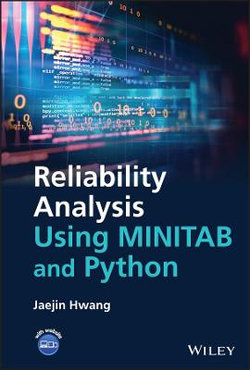Complete overview of the theory and fundamentals of Reliability Analysis applied with Minitab and Python tools
Reliability Analysis Using Minitab and Python expertly applies Minitab and Python programs to the field of reliability engineering, presenting basic concepts and explaining step-by-step how to implement statistical distributions and reliability analysis methods using the two programming languages. The textbook enables readers to effectively use software to efficiently process massive amounts of data while also reducing human error.
Examples and case studies as well as exercises and questions are included throughout to enable a smooth learning experience. Excel files containing the sample data and Minitab and Python example files are also provided.
Students who have basic knowledge of probability and statistics will find this textbook highly approachable. Nonetheless, it also covers material on basic statistics at the beginning, so students who are not familiar with statistics can follow the material as well.
Written by a highly qualified author in the field, sample topics covered in Reliability Analysis Using Minitab and Python include:
- Establishing a basic statistical background, with a focus on probability, joint probability, union probability, conditional probability, mutually exclusive events, and bayes' rule
- Statistical distributions, with a focus on discrete cases, continuous cases, exponential distribution, Weibull distribution, normal distribution, and lognormal distribution
- Reliability data plotting, with a focus on straight line properties, least squares fit, linear rectification, exact failure times, and readout failure data
- Accelerated life testing, with a focus on accelerated testing theory, exponential distribution acceleration, and Weibull distribution acceleration
- System failure modeling, with a focus on reliability block diagram, series system model, parallel system model, k-out-of-n system model, and minimal paths and minimal cuts.
- Repairable systems, with a focus on corrective and preventive maintenances, availability, maintainability, and preventive maintenance scheduling
Reliability Analysis Using Minitab and Python serves as an excellent introductory level textbook on the topic for both undergraduate and graduate students. It presents information clearly and concisely and includes many helpful additional learning resources to aid in understanding of concepts, information retention, and practical application.




Share This Book: